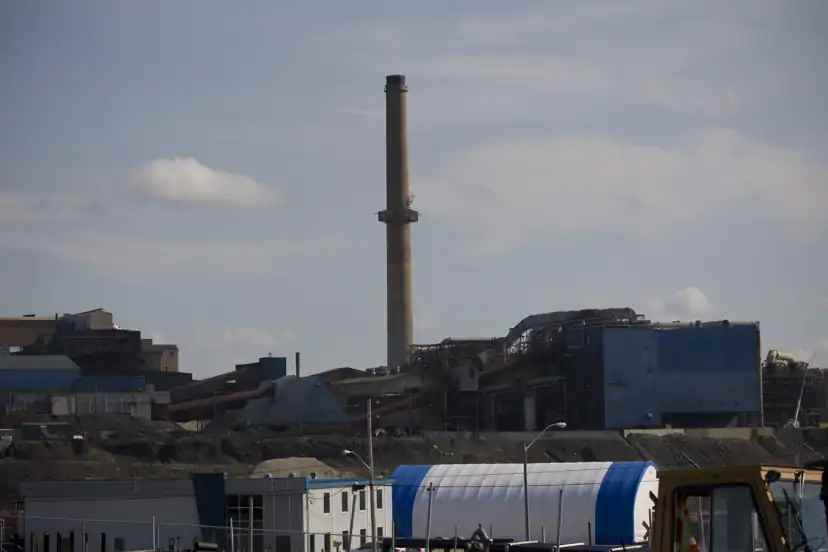The mystery persists around the withdrawal requested by the Dr Horacio Arruda for information on the links between arsenic emissions and lung cancer cases in Rouyn-Noranda from a report published in 2019.
Posted at 3:44 p.m.
The Abitibi-Témiscamingue Regional Public Health Department (DSPu) does not confirm the version of Dr Arruda, who said Thursday that his decision had been taken by “mutual agreement” with the DSPu.
Invited by The Press to indicate whether it had in fact given its agreement, the DSPu replied laconically: “Dr Arruda asked to withdraw appendix 6 from the report”.
The appendix in question referred to the “aggravating factor” constituted by arsenic emissions from the Horne Foundry, located in the heart of the city, in terms of lung cancer.
It appeared at the end of the report on the biomonitoring study carried out in the fall of 2018 on lead, cadmium and arsenic impregnation of young children in the Notre-Dame district of Rouyn-Noranda, neighboring the foundry. .

PHOTO SARAH MONGEAU-BIRKETT, LA PRESSE ARCHIVES
The Dr Arruda, who at the time was national director of public health and assistant deputy minister at the Quebec Ministry of Health and Social Services, justified the withdrawal of the appendix by explaining that its publication would have diverted attention from the subject. main part of the report.
The Dr Arruda, who at the time was national director of public health and assistant deputy minister at the Quebec Ministry of Health and Social Services, justified the withdrawal of the appendix by explaining that its publication would have diverted attention from the subject. main part of the report.
This withdrawal “made it possible to plan a subsequent dissemination by including in particular up-to-date data from the Quebec cancer registry, the release of which was to be imminent”, indicated the DSPu in its response to The Press.
Two and a half years later, this publication is still awaited.
Information disseminated
The withdrawal of the appendix from the official document did not prevent certain organizations which had had access to it from circulating it, underlines the DSPu.
“The content therefore circulated regionally despite the removal of the appendix from the report,” argues the spokesperson for the DSPu, Sarah Charbonneau.
33 times higher emissions
The Horne Foundry is licensed to emit 100 nanograms of arsenic per cubic meter of air (ng/m3), which is 33 times higher than the Quebec standard of 3 ng/m3.
The Dr Arruda also rejected the idea in 2019 that the smelter be subject to the Quebec standard, explaining that it was instead necessary to find a target for reducing its emissions that is “realistic”.
Conflict of interest
Horacio Arruda said in September 2019 that he had traveled to Rouyn-Noranda “as an adviser” to Minister Delegate for Health and Social Services Lionel Carmant, but the government hastened to question this assertion.
“Never the Dr Arruda has not been mandated as an adviser to Minister Carmant,” declared the latter’s press attaché, Lambert Drainville.
The Dr Arruda acted “completely autonomously”, added the Premier of Quebec, François Legault.
Learn more
-
- 1170ng/m3
- Record level of arsenic in the air recorded in 2021 near the Horne Foundry, while the standard is 3 ng/m3
SOURCE: MINISTRY OF THE ENVIRONMENT AND THE FIGHT AGAINST CLIMATE CHANGE

